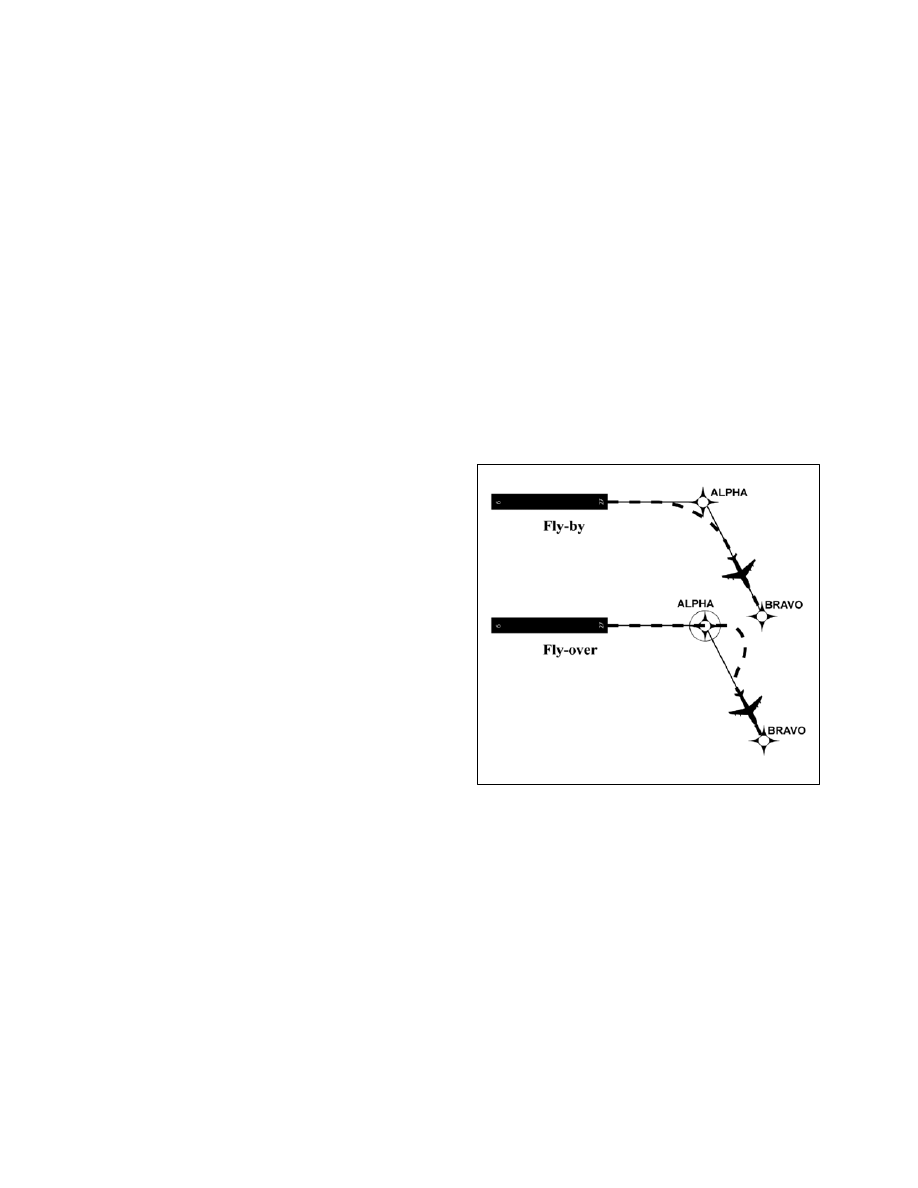
AIM
4/3/14
1−2−1
Area Navigation (RNAV) and Required Navigation Performance (RNP)
Section 2. Area Navigation (RNAV) and Required
Navigation Performance (RNP)
1
−
2
−
1. Area Navigation (RNAV)
a. General.
RNAV is a method of navigation that
permits aircraft operation on any desired flight path
within the coverage of ground or space based
navigation aids or within the limits of the capability
of self−contained aids, or a combination of these. In
the future, there will be an increased dependence on
the use of RNAV in lieu of routes defined by
ground−based navigation aids.
RNAV routes and terminal procedures, including
departure procedures (DPs) and standard terminal
arrivals (STARs), are designed with RNAV systems
in mind. There are several potential advantages of
RNAV routes and procedures:
1.
Time and fuel savings,
2.
Reduced dependence on radar vectoring,
altitude, and speed assignments allowing a reduction
in required ATC radio transmissions, and
3.
More efficient use of airspace.
In addition to information found in this manual,
guidance for domestic RNAV DPs, STARs, and
routes may also be found in Advisory Circu-
lar 90−100A, U.S. Terminal and En Route Area
Navigation (RNAV) Operations.
b. RNAV Operations.
RNAV procedures, such
as DPs and STARs, demand strict pilot awareness and
maintenance of the procedure centerline. Pilots
should possess a working knowledge of their aircraft
navigation system to ensure RNAV procedures are
flown in an appropriate manner. In addition, pilots
should have an understanding of the various
waypoint and leg types used in RNAV procedures;
these are discussed in more detail below.
1. Waypoints.
A waypoint is a predetermined
geographical position that is defined in terms of
latitude/longitude coordinates. Waypoints may be a
simple named point in space or associated with
existing navaids, intersections, or fixes. A waypoint
is most often used to indicate a change in direction,
speed, or altitude along the desired path. RNAV
procedures make use of both fly−over and fly−by
waypoints.
(a) Fly
−by waypoints. Fly−by waypoints
are used when an aircraft should begin a turn to the
next course prior to reaching the waypoint separating
the two route segments. This is known as turn
anticipation.
(b) Fly
−over waypoints. Fly−over way-
points are used when the aircraft must fly over the
point prior to starting a turn.
NOTE
−
−2−1 illustrates several differences between a fly−by
and a fly
−over waypoint.
FIG 1
−2−1
Fly
−by and Fly−over Waypoints
2. RNAV Leg Types.
A leg type describes the
desired path proceeding, following, or between
waypoints on an RNAV procedure. Leg types are
identified by a two−letter code that describes the path
(e.g., heading, course, track, etc.) and the termination
point (e.g., the path terminates at an altitude, distance,
fix, etc.). Leg types used for procedure design are
included in the aircraft navigation database, but not
normally provided on the procedure chart. The
narrative depiction of the RNAV chart describes how
a procedure is flown. The “path and terminator
concept” defines that every leg of a procedure has a
termination point and some kind of path into that
termination point. Some of the available leg types are
described below.